
How To Use Aeroponics To Grow Potent Cannabis
Aeroponics is an advanced cultivation technique used to produce all sorts of crops, and there's no reason you can't reap its benefits with cannabis. With the right equipment, knowledge, and plenty of dedication, you can grow amazing aeroponic weed at home today.
Aeroponics is a unique cultivation method that doesn’t utilise a growing medium. Instead of growing in soil or water, aeroponics keeps your plants suspended in air, maximising their ability to take up air, water, and nutrients. The results can be incredible, granted you know how to properly set up an aeroponic system and manage its many variables.
Read on for a detailed overview of everything you need to know about growing exceptional weed with aeroponics.
What Is Aeroponics?
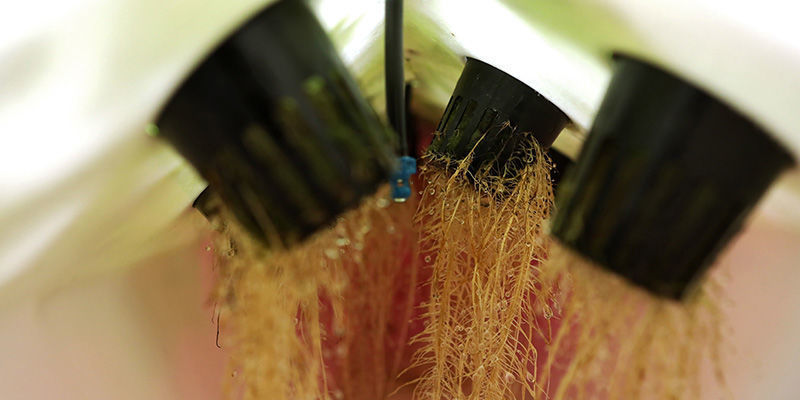
Aeroponics, as the name suggests, refers to the process of growing plants in the air rather than in soil or an aggregate growing medium. Technically a subset of hydroponics, aeroponics uses water (in the form of mist) to deliver nutrients to a plant’s roots. However, aeroponics differs from regular hydroponics in that aeroponic plants don’t sit in water or an inert medium; instead, their roots sit completely exposed to the air.
What Are the Advantages of Aeroponics for Cannabis?
There are many key benefits to growing in aeroponics, including:
-
Plants take up more nutrients than in soil or traditional hydro setups.
-
Massive growth: Aeroponically grown plants develop much faster and more vigorously than plants grown in soil or hydro.
-
Less waste: Aeroponically grown plants take up nutrients and water much more efficiently.
-
Great for small spaces: Aeroponic systems can be tailor-made to optimise growth in small spaces; e.g. vertical farming.
-
Easy to clean and maintain.
-
Bigger yields!
What Are the Disadvantages of Aeroponics for Cannabis?
Besides its many advantages, aeroponics also has its cons. Some of the biggest downsides to growing aeroponic weed include:
-
It’s very hands-on: Running an aeroponic grow is very detail-orientated and might prove overwhelming for beginner growers.
-
Initial setup costs are high, meaning aeroponics might not be ideal for growers working with a tight budget.
-
Running an aeroponic grow requires a certain amount of knowledge about nutrients/feeding. Over or under-feeding can quickly become a problem for novices.
-
Highly volatile: If any part of an aeroponic system fails (be it your misters, pumps, or timer), your plants will die extremely quickly.
-
Aeroponic setups need to be cleaned and sterilised regularly to prevent the buildup of bacteria, fungi, or other pathogens around a plant’s root zone.
How Does an Aeroponic System Work for Growing Cannabis?
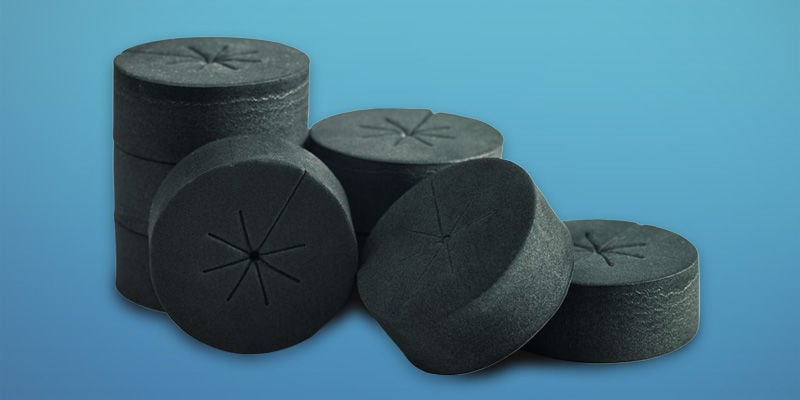
In an aeroponic system, cannabis plants typically grow in small platforms suspended above a water reservoir. Because the plants aren’t weighed down by soil or another medium, they typically need to be held in place with some kind of support system, and their roots are left to hang above the reservoir, which is enriched with both macro and micro-nutrients.
Most growers will use a timer and a pump to periodically pump water from the reservoir to sprinklers that mist the plants’ roots. Because the roots aren’t covered by a medium, they receive much more oxygen than in a typical soil or hydroponic setup, and still have access to the water and nutrients they need to fuel their growth.
As a result, aeroponic plants can take up more nutrients and grow much faster, both above and below ground, when compared to plants grown in soil or a soilless hydro setup.
Different Types of Aeroponic Systems
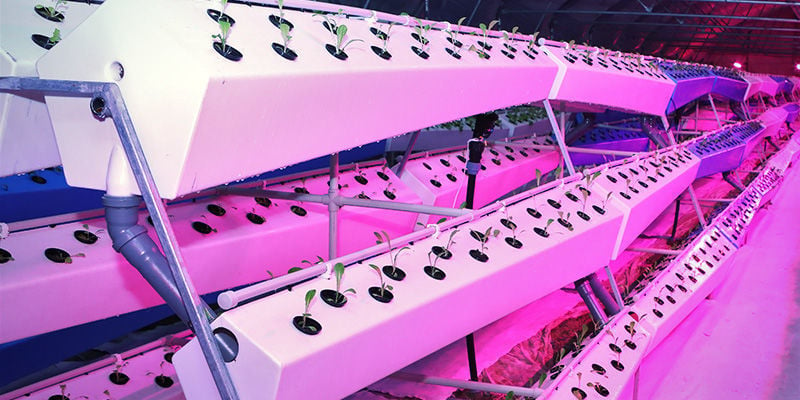
Aeroponic systems are typically separated into 3 distinct categories. The unique characteristics and setups of each mean they suit very different growers and operations.
Low-Pressure Aeroponics
Low-pressure aeroponic (LPA) systems, as the name suggests, use low-pressure pumps and sprinklers to spray water from the reservoir around the root zone of cannabis plants. They are, by far, the most-used type of aeroponics by hobby growers and small-scale cannabis cultivators, mainly because they are easy to set up and maintain.
All of the components you’d need to set up an LPA system at home are available at any good grow shop, garden centre, or Home Depot-style outlet.
High-Pressure Aeroponics
High-pressure aeroponics (HPA) systems are much more specialised than LPA. These systems use, you guessed it, high-pressure pumps and atomisers to douse the root zone with water droplets of 50 microns or less. These ultra-fine droplets help to maximise oxygen levels in the root zone even further, which ultimately translates into even faster growth than what you’d see in an LPA system.
Ultrasonic Fogger Aeroponics
Commonly referred to as “fogponics”, these aeroponic systems go beyond HPA and LPA, atomising water from your reservoir into even smaller droplets. The result is faster, healthier growth both above the ground and in the root zone.
In aeroponics, the smaller the droplets used to mist the root zone, the better. Not only are smaller droplets easier for plants to absorb, but they also increase the oxygen levels in a plant's root zone, stimulating growth even further.
How To Grow Cannabis Using Aeroponics
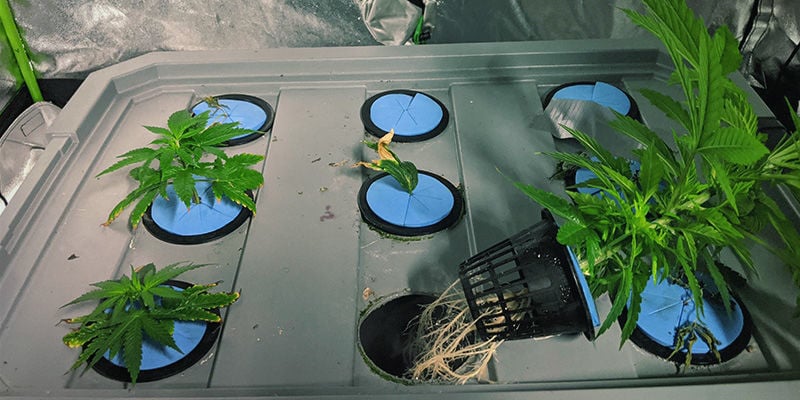
So, you’re sold on the idea of growing aeroponic weed at home. That’s great, but keep in mind that this is an advanced style of cultivation that can easily overwhelm beginners. To help guide you through this epic shift in cultivation, make sure to use our detailed aeroponic growing guide below.
Note: There are many variables to consider when setting up an aeroponic cannabis grow, so we won’t get hung up on specifics (you’re going to have to do further research to figure those out for yourself). However, our guide will provide you with the foundation to build, run, and maintain a successful aeroponic grow at home.
Aeroponics Equipment
- Suitable grow tent or room
- Sealable container to use as a reservoir tank
- Net pots to sit your plants in
- Zip ties or training clips to hold your plants in place
- A pump to move water from your reservoir to the root zone
- Sprinkler heads and PVC/plastic tubing to route water from your reservoir and pump to the root zone
- Grow lights
- Ventilation
- Small cooling fan to aerate the root zone
- Timer to automate your pump and sprinkler
Growing Cannabis With Aeroponics: Step-by-Step Guide
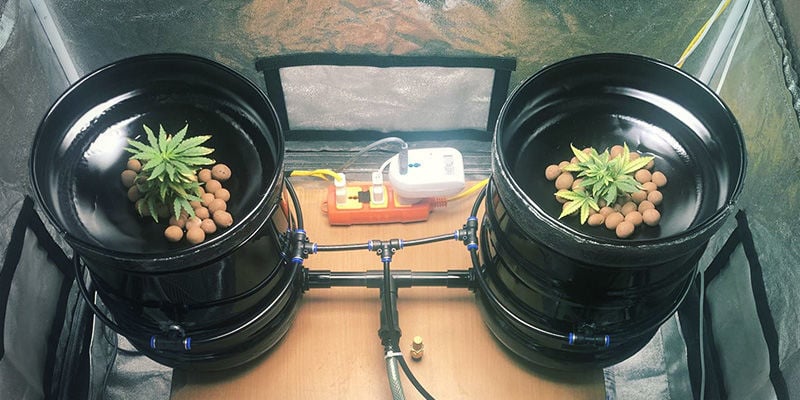
1. Pick the Right Aeroponic System
Unless you’ve got a lot of capital to pour into specialised equipment, your best bet for starting an aeroponic grow is to use a low-pressure system. As we mentioned earlier, you can find all the equipment you need to set up an LPA system at your local grow store or garden centre, and getting started won’t leave you bankrupt.
If you’re on a budget, consider looking into a DIY setup. Most entry-level aeroponic systems sold online are basically glorified DIY systems anyway, and you’ll save a decent amount of money if you take on the job of building your setup from scratch.
2. Choose Your Grow Space
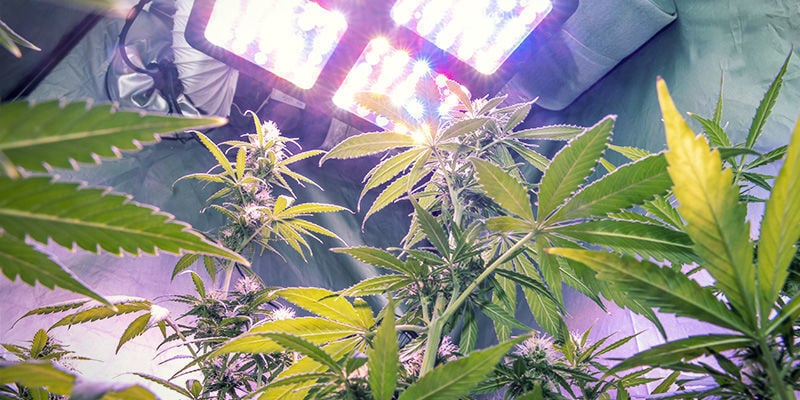
You can set up an aeroponic system essentially anywhere you’d usually run an indoor soil or soilless grow. Arguably one of the easiest solutions is to buy a grow tent and deck it out with the same grow lights and ventilation system you’d use for a regular grow. From there, you can move on to set up your reservoir, pump, and routing pipes on the floor of your tent.
3. Create Your Reservoir
The size of the reservoir you use will obviously depend on the number of plants you want to grow, the space available to you, and your budget. Using a 100-litre reservoir is pretty common, but you can go above or below that to suit your needs.
How you choose to create your reservoir, again, is up to you. Arguably some of the most common materials we see growers use are plastic storage bins or buckets. Whatever you choose, make sure it is of a dark colour and seals completely. Any light leaking through your reservoir from your grow lamps greatly increases the risk of bacteria, fungi, or other pathogens growing in the water and attacking your plants.
For even better results, we recommend building a small cooling fan right into your reservoir (running a small computer fan above the reservoir limit works perfectly). Run the fan 24/7 to maximise oxygen levels at the root zone and boost your plants’ growth and yields!
4. Position Your Plant Pots
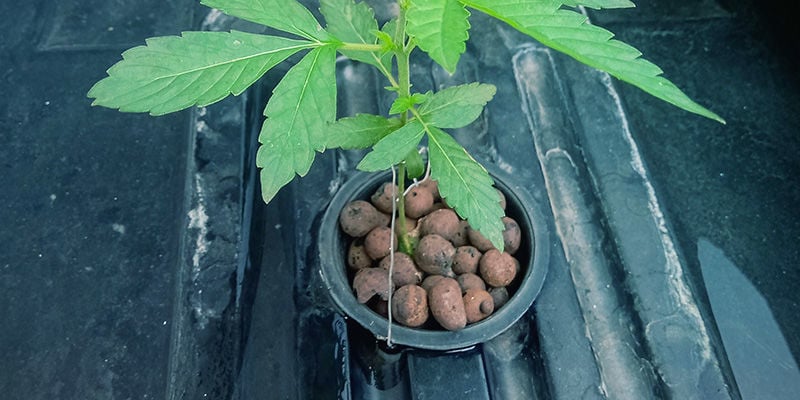
In an aeroponic system, your plants sit above your water reservoir. If you’re using plastic buckets or storage crates with lids, you’ll be able to set up this space pretty easily by cutting holes into the lids and placing small net pots inside. Where possible, use insulating tape to block out any areas where light might leak into the reservoir.
Again, how you make use of the space above your reservoir is completely up to you. Just remember to leave enough space between your plants; just like in a soil or hydro grow, overcrowding in an aeroponic setup will not only force plants to compete for light and space, but also creates a breeding ground for mould and bacteria.
Note: Given there are so many different ways to use aeroponics, it's virtually impossible for us to give recommendations on exactly how much space to leave between your plants. Some growers use aeroponics together with SOG or ScrOG to grow multiple smaller plants at a time, while others opt to grow just one plant and use topping, LST, fimming, and mainlining to maximise their yields.
If you’re reading this and have used aeroponics before, share your tips and tricks with us to help our readers make the most of this amazing technique!
5. Route the Water From Your Reservoir to Your Root Zone
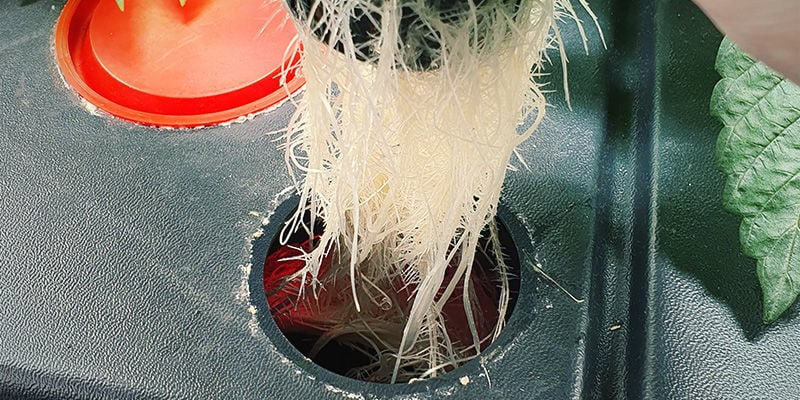
Once you’ve got your reservoir sorted, you’ll need to start thinking about how to pump the water or nutrient solution from within to your plants’ roots. Most hobby growers keep this process as simple as possible, and just keep a small, low-pressure pump submerged in their water reservoir. Others opt to keep their pumps outside of their reservoir where they can access them more easily for cleaning, servicing, etc.
Again, the type of pump you use for your aeroponic grow will depend on your budget and the size of your setup. A very general recommendation is to use a pump with an LPH (litre per hour) capacity that’s roughly 2–3 times that of the water in your reservoir; this will ensure your pump moves water quickly and efficiently.
Remember, your pump needs to direct water from your reservoir tank to the spray nozzles/atomiser at your plants' roots. How exactly you set this up will vary depending on the size of your setup, the space between plants, and the space available to you in general.
For best results, we recommend keeping both the route from your reservoir to your pump and from your pump to your spray nozzles as short and simple as possible; this will optimise the pressure of your spray nozzles, minimise the chance of leaks, and help simplify your entire setup.
Most aeroponic cannabis growers use PVC pipes to route their water, but we’ve also seen growers use plastic hosing like that used in drip irrigation systems. What you choose will depend on what's available in your area, your personal preferences, and your budget.
6. Atomise Water at the Root Zone

The spray nozzles/atomisers that mist the roots of your plants mark the final point in your aeroponic system. This is where the water and nutrients in your reservoir get turned into small droplets to be absorbed by your plants’ roots.
For most basic home setups, using simple sprinkler heads will be more than enough. The exact size of the heads you use is contingent on how many sprinklers you’re using, the number of plants you’re growing, and the size of your root systems. We generally recommend using heads with a 360° radius for the middle of the root zone, and heads with a 180° radius at the edge of the root zone to avoid unnecessarily spraying the sides of your tank.
7. Automate Your Grow
The beauty of aeroponics is that you can completely automate your grow with just a timer. For best results, we recommend spraying your plants every 3–4 minutes for about 3–5 seconds, but you’ll likely need to adjust this based on the genetics you're working with and the nutrients you're using.
In general, most aeroponic growers use a hydroponic nutrient solution (either synthetic, organic, or a combination of the two). Striking the right balance when it comes to feeding your plants can be tricky, and a simple slip-up can quickly lead to nutrient deficiencies or burn. Ideally, we recommend you start feeding your plants ¼ of the amount recommended by your fertiliser brand, and gently increase from there. Also, getting a pH and EC meter will help you avoid any issues by giving you a quick read on your nutrient solution.
Tips for Growing Weed Using Aeroponics
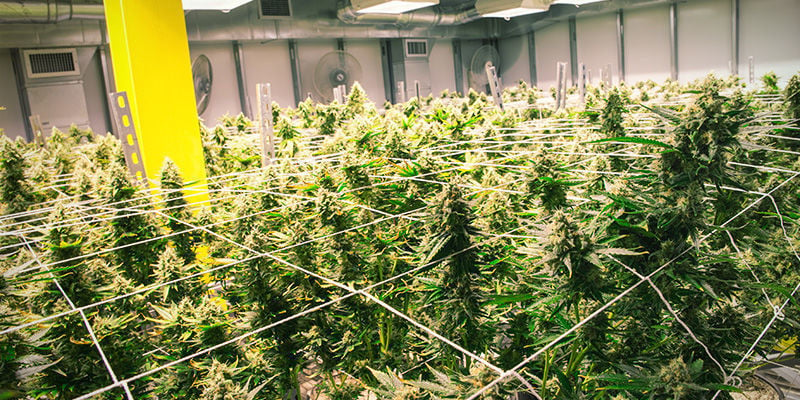
As your plants grow, pay close attention to how they get along both above the “ground” and below it. Use the tips below to get the best possible results when growing cannabis aeroponically.
Pick the Right Strains
Not all strains are equally suited to aeroponic growing. In general, photoperiod strains are more applicable to this growing method as they tend to handle nutrient fluctuations better than autoflowers.
Robust, resilient hybrids often perform the best in aeroponic setups, as they have been primed to develop strong root systems to suck up nutrients and optimise yields. Strong, Haze-derived hybrids like Blue Dream make a particularly great feature in an aeroponic setup.
Use Cool Grow Lights
In hydro and aeroponics, the water in the reservoir shouldn’t get too warm. Beyond 24°C, there is an elevated risk of algae and other harmful microorganisms forming, which is detrimental to your setup and plants.
Ideally, we recommend using CFL or LED grow lights when growing aeroponically. Strong HID lamps transmit a lot of heat, and the last thing you want is to warm up your reservoir (bacteria, fungi, and algae love warm water). For best results in an aeroponic cannabis grow, use full-spectrum LED lights.
Monitor and Measure Everything
While aeroponic systems can deliver fantastic results, they are also very meticulous and require a lot of attention. Unfortunately, they do not allow any room for error, unlike soil grows.
Again, make sure to get your hands on a pH and EC meter, as this will tell you if your nutrient solution is off. Also, keep a keen eye on the temperature around your canopy, your roots, and the actual water in your tank. For best results, keep your tent/grow room temperature around 21°C, and the temperature of your reservoir and your tank around 18°C.
Once you’ve achieved those temperatures, make sure to instal thermometers and check them regularly to catch any small shifts quickly and adjust them as needed.
Aeroponics vs Hydroponics: Which Is Better?
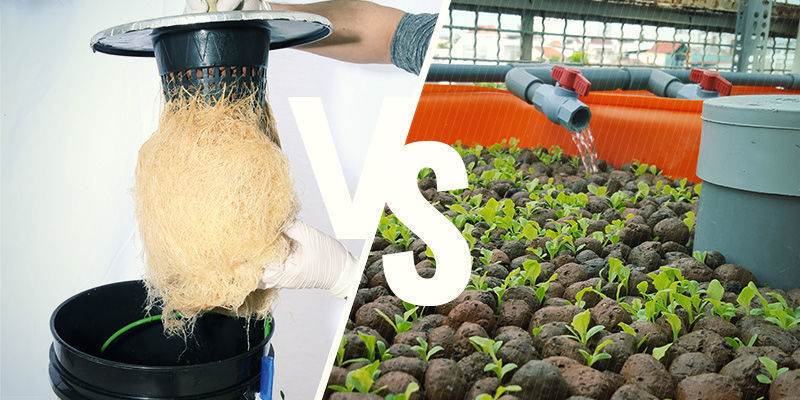
Aeroponics, as we’ve seen, provides an exciting yet challenging way to grow cannabis. If you’re ready to make the shift to this new type of cultivation, make sure to keep this guide handy and share your experiences with us.
When it comes to the aeroponics vs hydroponics debate, there is no better or worse option. In many aspects, hydro and aero setups are similar, since neither uses soil as a growing medium and both require a lot of care and attention to run smoothly. If you're looking to move on from traditional soil grows, both hydroponics and aeroponics can be exciting options, and choosing one over the other will come down to your expertise as a grower, your budget, and your personal preferences. When managed properly, both hydroponics and aeroponics can produce spectacular results.
-
 5 min
March 18, 2021
Should You Grow Cannabis Using Soil, Coco Or Hydroponics?
Should you grow your weed in soil, coco coir or hydroponics? Below, we take a look at the different growing media you can use to cultivate cannabis, along with their pros and cons.
5 min
March 18, 2021
Should You Grow Cannabis Using Soil, Coco Or Hydroponics?
Should you grow your weed in soil, coco coir or hydroponics? Below, we take a look at the different growing media you can use to cultivate cannabis, along with their pros and cons.
-
 3 min
April 5, 2020
5 Cannabis Strains Perfect For Deep Water Culture Hydroponics
Deep water culture offers some serious benefits when compared to growing in soil. But not all strains react the same to this method. Try out these 5 cultivars for the best results!
3 min
April 5, 2020
5 Cannabis Strains Perfect For Deep Water Culture Hydroponics
Deep water culture offers some serious benefits when compared to growing in soil. But not all strains react the same to this method. Try out these 5 cultivars for the best results!
-
 6 min
February 5, 2020
How To Grow Huge Yields Of Cannabis Using DWC Hydroponics
Abundant yields in less time with fewer resources? This is the promise of growing cannabis in a hydroponic system. When it comes to deep water culture (DWC), what are the benefits and drawbacks?...
6 min
February 5, 2020
How To Grow Huge Yields Of Cannabis Using DWC Hydroponics
Abundant yields in less time with fewer resources? This is the promise of growing cannabis in a hydroponic system. When it comes to deep water culture (DWC), what are the benefits and drawbacks?...
-
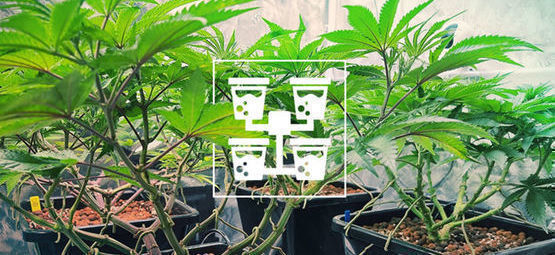 3 min
June 13, 2019
Learn All About DWC And Advanced Hydroculture
Using DWC buckets is one way to set up your hydroponic grow, but there are more options for you to take when going the hydro route. Find out about the different setups, and check the major pros and...
3 min
June 13, 2019
Learn All About DWC And Advanced Hydroculture
Using DWC buckets is one way to set up your hydroponic grow, but there are more options for you to take when going the hydro route. Find out about the different setups, and check the major pros and...











 United States
United States








